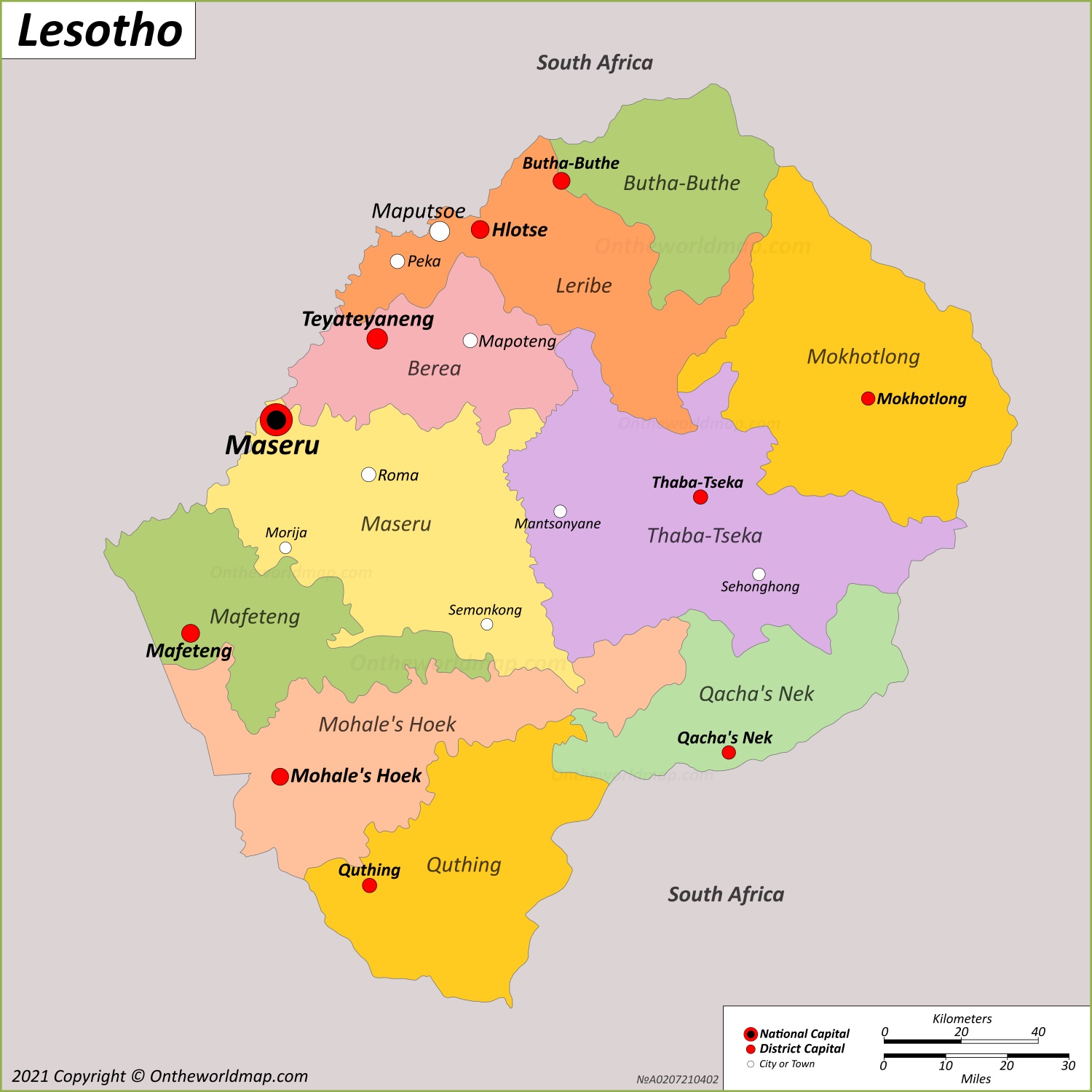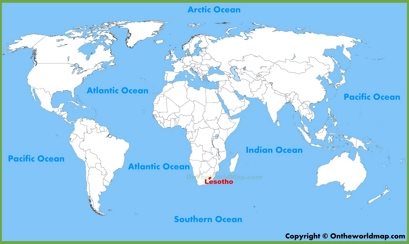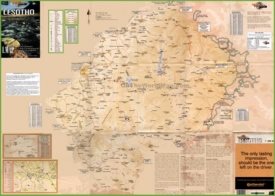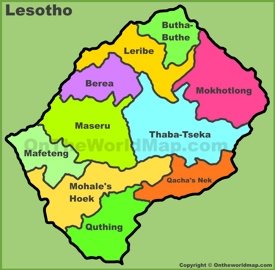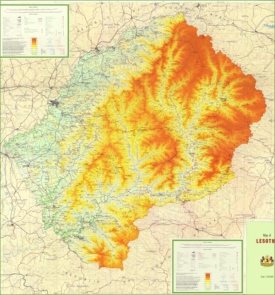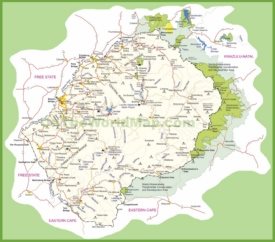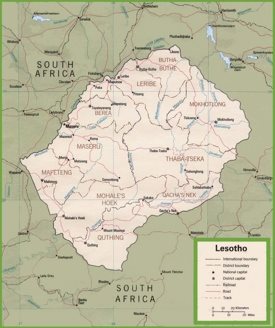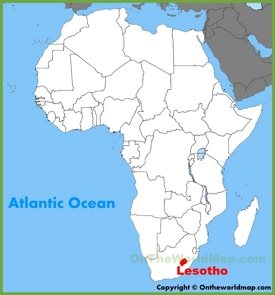Lesotho Map
Description:
This map shows governmental boundaries of countries; districts, district capital cities, and major cities and towns in Lesotho.
Size: 1500x1500px / 275 Kb
Author: Ontheworldmap.com
You may download, print or use the above map for educational, personal and non-commercial purposes. Attribution is required. For any website, blog, scientific research or e-book, you must place a hyperlink (to this page) with an attribution next to the image used.
Online Map of Lesotho
Detailed Maps of Lesotho
About Lesotho
Lesotho, a landlocked country in southern Africa, is completely surrounded by South Africa. Known for its mountainous terrain, it is one of the few countries in the world located entirely above 1,000 meters above sea level. The government of Lesotho is a parliamentary constitutional monarchy.
Maseru, the capital and largest city, serves as Lesotho's political and economic center. Other significant cities include Teyateyaneng, Mafeteng, and Hlotse, each contributing to regional trade and the local economy.
Lesotho's economy is largely dependent on agriculture, livestock and remittances from Basotho working in South Africa. The textile and garment industry also plays a significant role, with exports mainly destined for the United States under the African Growth and Opportunity Act. In addition, exports of water and hydroelectricity to South Africa generate substantial revenue.
Tourism in Lesotho focuses on its natural beauty and outdoor activities. The Maloti Mountains offer opportunities for hiking, skiing and bird watching. Sehlabathebe National Park, a UNESCO World Heritage Site, attracts visitors with its unique flora and fauna. The Katsé Dam, part of the Lesotho Highlands Water Project, is an engineering marvel and a popular tourist attraction.
Lesotho's strategic location and natural resources offer opportunities for economic development, although problems such as poverty and unemployment persist. The government continues to focus on infrastructure development, education, and health care to improve living standards. Despite these challenges, Lesotho's rich cultural heritage and scenic landscapes make it a unique destination in Southern Africa.
The Facts:
Capital: Maseru.
Area: 11,720 sq mi (30,355 sq km).
Population: ~ 2,250,000.
Largest Cities: Maseru, Teyateyaneng, Mafeteng, Hlotse, Mohale's Hoek, Maputsoe, Qacha's Nek, Quthing, Butha-Buthe, Mokhotlong, Thaba-Tseka, Peka, Roma, Mapoteng, Sehonghong, Mantsonyane, Semonkong, Morija.
Official language: Sesotho, English.
Currency: South African rand (ZAR).
Districts of Lesotho: Berea, Butha-Buthe, Leribe, Mafeteng, Maseru, Mohale's Hoek, Mokhotlong, Qacha's Nek, Quthing, Thaba-Tseka.
Geography of Lesotho
Lesotho, has a predominantly mountainous terrain. The country is divided into four distinct geographical regions: the lowlands, the foothills, the mountains and the Senqu River Valley.
The lowlands, located in the west of the country, encompass the most fertile areas where the majority of the population lives. The foothills transition to the highlands, where peaks exceed 3,000 meters, including Tabana Ntlenyana, the highest point in southern Africa.
Lesotho has a temperate climate, with hot, humid summers and cold, dry winters. Due to its high altitude, temperatures are cool year-round and snow falls in the mountains in winter, contributing to the country's unique climatic conditions.
Brief History of Lesotho
Lesotho's history is linked to the formation and consolidation of the Basotho nation in the early nineteenth century. King Moshoeshoe I united the various Sotho-speaking groups into a cohesive state, successfully defending it from external threats, including invasions by the Zulus and Boers.
In 1868, Moshoesho sought protection from Great Britain, resulting in Lesotho becoming a British protectorate known as Basutoland. This status lasted until 1966, when Lesotho gained independence and established a constitutional monarchy. After independence, Lesotho experienced political instability, including periods of military rule and civil unrest. In the 1990s, the country returned to democratic rule, focusing on political reform and development. Lesotho maintains a unique identity in Southern Africa, balancing traditional authority and modern governance.

